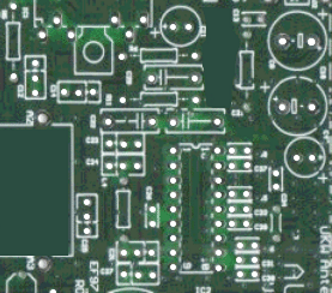through hole technology (PCB) (THT)
In the case of printed circuit boards, a distinction is made between those in which the electronic components are provided with connecting wires that are inserted into pre-drilled holes, the through-hole technology ( THT), and the SMT technology, in which the components only have connecting contacts that are applied to the surface of the printed circuit board and soldered.
The classic PCB assembly technique is the through-hole technique. In this technique, the insertion holes are calculated, drilled and contacted. The individual holes have a soldering surface and, in the case of plated-through holes, the hole is covered with a copper sleeve. The holes provide the electrical and mechanical connection between the PCB and the component.
The electronic component is inserted through the hole with the connecting wire or pin, the connecting wires are cut off and soldered to the conductor track using the wave soldering technique. In the process, the solder also flows between the copper sleeve and the connecting wire.
In this PCB technology, vias are used to create through-platings between the individual layers of the multilayer PCB. If the plated-through hole is filled with solder paste for the soldering process, this is also known as the pin-in-paste( PiP) process. During reflow, the solder liquefies and forms the solder joint in the through-hole.


-bei-einer-THT-Verbindung_en.png)